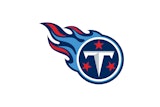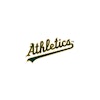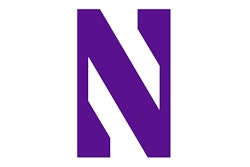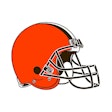A true baseball purist, Steve Malliet likes stepping onto a well-manicured baseball diamond and smelling the freshly mowed grass. And his personal journey through professional baseball, with stops in the front offices of four minor-league teams and one big-league club, has allowed him this pleasure often. ...
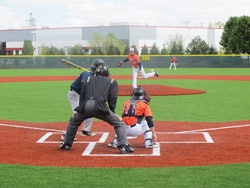
But only since 2010 - the inaugural season of the Normal (Ill.) Cornbelters, one of two Frontier League franchises that he currently co-owns - has Malliet gotten a sense of the economic advantages realized by carpeting The Corn Crib playing surface entirely in synthetic turf. Even the pitcher's mound is completely composed of manmade materials, save for a little sand.
Stockpiles of grounds maintenance product such as fertilizers, pesticides, topdressing mixes, infield conditioners and chalk have been eliminated. For that matter, so has the need for a traditional grounds crew. tarps are now obsolete. Whereas teams playing on natural grass and clay, including Malliet's River City Rascals in O'Fallon, Mo., might burn through uniforms every other season, the Cornbelters are just now replacing their debut unis as they head into season four, and Malliet maintains they could have gotten another season out of them had he been able to resist the lure - strictly from a merchandising standpoint - of the switch. In Normal, he says, "we don't spend near the money on detergent and stain removal."
Baseballs stay whiter, too. The Rascals go through 350 dozen balls a season; the Cornbelters only 250 dozen. Cornbelter balls rarely even get wet, because the field - infill synthetic turf over a stone base and perforated-pipe drainage system - can handle a foot of rain per hour. Only twice in three years have persistent rains soaked players sufficiently to cancel games. "You cannot rain out this turf," says Malliet. "It's impossible." And how does that compare to his natural-grass ballpark? "We're going to have three or four rainouts in River City this year, for certain," he says. "Maybe more."
"Synthetic makes sense for baseball because these systems drain so well," says A-Turf founder and president Jim Dobmeier. "Step back and think of all field sports. There's not one out there that needs drainage to be excellent any more than baseball. I'll make the argument as a guy who played both sports that there's every bit as much need for synthetics in the baseball world as there is in the football world."
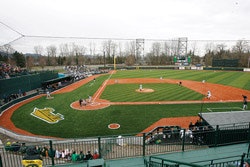
A HATFUL OF OPTIONS
Baseball facility operators everywhere are beginning to see the bright side of blanketing their diamonds in synthetic turf. "It's a concept that has really caught on," says Webb Cook, national sales manager at Sprinturf, which has gone from perhaps one baseball installation a year to half a dozen or more. "And I would tell you that it's both baseball-specific fields and multiuse fields, where you have 120,000 square feet, and they've pushed out one corner and dropped in a baseball infield."
"The NCAA level certainly has become more accepting," adds Darren Gill, vice president for global marketing at FieldTurf, which installed 30 synthetic turf baseball fields at all levels in 2012, roughly half of all U.S. installations last year. "I think you're seeing a lot more NCAA institutions go that way."
Once a baseball program embraces the synthetic turf concept, there are still many ways to go. Like no other turf application, baseball brings with it a hatful of options. Clients may choose to replace only their facility's natural grass with turf, leaving the skinned areas - the mound, batter's boxes, baselines and arced infield - to remain clay. Some opt for clay cutouts as sliding areas around each base, reminiscent of the look sported by the carpeted multisport stadiums of the 1970s (think Pittsburgh's Three Rivers Stadium and The Vet in Philadelphia). Some limit clay only to the mound and plate area, and still others cling to the purity of a traditional pitcher's mound - a tiny island of clay in a sea of synthetics. Then there are the installations where every square inch is synthetic, including the mound, which in some cases can be removed to better facilitate multiple uses on the field. Says Gill, "We've done every permutation and combination available."
The chosen system itself can be tweaked to accommodate a baseball field's multiple areas of functionality - a consideration foreign to other field sports applications. The brown-colored turf (typically terracotta or beige) on the infield arc might be specified with a stouter fiber at a shorter pile height, supported by a sand-rubber infill mix that ups the sand content to replicate the faster ball response of clay. Warning tracks might be firmer still, with a lava rock component helping players judge, without looking, where they are on the field. Smaller patches of more durable turf, with heavier backing and denser fibers, can be installed in front of the pitching rubber and at the point where the pitcher's planting foot lands, as well as in the batter's boxes.
Aesthetically speaking, inlaid baselines and batters boxes always remain pristinely white, and different shades of green can be selected in varying stripe widths to replicate mowing patterns on infield and outfield grass.
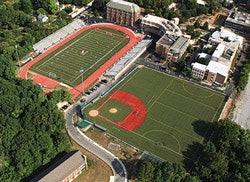
GRASSLIKE PLAYABILITY
But what about the ultimate test: playability? We're not talking about the pinball-fast game witnessed in the carpeted parks of the past, with their chop singles and seeing-eye triples. "The purists say baseball should be played on natural grass," says Dobmeier, a former amateur baseball player and youth traveling team coach. "I understand that, but you can modify these systems to give you a surface that is very comparable to a well-conditioned natural grass field in terms of ball bounce and speed - but without the crazy bounces." (One turf manufacturer's website claims that some NCAA Division I baseball programs have reported seeing their fielding error totals cut in half.)
Days before his team's Feb. 15 season opener, Vanderbilt University second baseman Tony Kemp told The Tennessean that the new synthetic field at Hawkins Stadium, built in 2002, "plays a little bit quicker" compared to natural grass, that he gets a better jump on his steal attempts and has to start his slides earlier. But such adjustments haven't held back the Commodores at home, where they played all but one of the first 14 games on their 2013 schedule, going 13-1 over that stretch.
Playability also means extended usability. "When you get into the travel baseball world, where there are dozens of teams in a tournament and they'll play five, six, seven games in a day on each diamond, you understand quickly that - regardless of the climate that it's in and regardless of the intentions of people to keep the diamonds in good shape - synthetics allow that kind of play at a much different level than a natural grass field," Dobmeier says. "Natural grass cannot take that kind of wear and tear."
Any playability advantages synthetic turf holds over natural grass are only magnified in less than ideal weather conditions - all too common for teams, particularly in the northern United States, that begin their seasons in February (college) or March (high school). "As early as they start, whether it's collegiate or high school, having a turf baseball field means they can go out and practice," Cook says. "Regardless of climate, you're not worried about dirt being wet and unplayable."
"We were practicing out here in the snow," one Sun Priarie (Wis.) High School player told Madison.com in 2011, the year the Cardinals began play at a facility featuring a synthetic infield and natural grass outfield. Adds Dobmeier, "The season can get started in a more real way, without having to send guys into gymnasiums and indoor batting cages."
THE NEW NORMAL
Synthetics afford baseball organizations one other luxury: the chance to play on a surface comparable to one they couldn't grow no matter how much time and money they threw at it. The climate in central Illinois doesn't support Bermuda grass, but the Cornbelters play on a synthetic fiber that comes comfortably close to Bermuda's characteristic trueness and consistency. Says Malliet, "Players will tell you they prefer Bermuda, so we wanted to simulate that feel."
The look and feel of the field in Normal is fast becoming the new normal in the Frontier League. Six of the league's 14 teams play on synthetic turf, and others are mulling conversions. "River City will be going to it as soon as we can scrape up enough money there to do it," Malliet says. "In the minor leagues, you never know what you're going to get as far as a natural field is concerned. There are some really nice fields, but then there are some inconsistencies, too, that you don't get necessarily at the big-league level. With a synthetic surface, you get true play like you would at a Major League Baseball field. Players love it. From a business standpoint, I love it."
Polished Diamonds
With its varying surface types, moisture requirements and marking protocols, there is no playing surface more labor-intensive to maintain than that of a traditional baseball field. But if the field is made of synthetic turf, maintenance is substantially reduced.
"It's not like these synthetics have zero maintenance," cautions A-Turf president Jim Dobmeier, "but what they do have is minimal maintenance. It's probably one-tenth to one-twentieth of the amount of maintenance you need on a natural grass diamond."
Where a given synthetic field falls in that range depends on how it is configured. An installation might be 100 percent synthetic, feature clay only in select areas or retain all of the clay elements of a traditional field. On fields with clay-to-turf transitions, care must be taken to keep the two elements separate. "You'll get migration of the dirt into the turf, and if you don't clean that out, that dirt will become as hard as rock," says Webb Cook, national sales manager for Sprinturf. "Where the pitcher comes off the front of the mound, that clay is just caked into the turf. You have to really work to get it back out, and then have to get the infill back in."
Adding infill is a maintenance must - even on fields without clay. High-traffic areas around first and second base, on the mound and in the batter's boxes will require regular monitoring for displaced infill and redistribution with a fine-tined rake and/or stiff-bristled broom, or topdressing by hand with stock infill. Says Darren Gill, global marketing manager for FieldTurf, "The rule of thumb is relatively simple: maintain your infill heights."
Since infill supports and protects the turf fibers, failing to maintain recommended levels can lead to fibers being ripped from the turf backing and entire sections of turf requiring replacement.
A bigger issue for James Miner, stadium superintendent for the Prospect League's Chillicothe (Ohio) Paints, who've played on an all-synthetic field since 2006, is turf contamination. "The number-one cause of contamination," he says, "is sunflower seeds."
Miner removes the seed shells as best he can with a lawn sweeper or a combination of rake, broom and dustpan. It's a problem that doesn't go away otherwise. "Organic things like leaves, sunflower seeds, all that stuff will break down on an organic surface," Miner says. "On turf, they won't."
Cook contends that among synthetic turf applications in all sports, baseball still pulls rank as the most maintenance-intensive. To that end, buyers shouldn't expect their fields to pay for themselves. "If the cost of a field is $800,000, and you're looking for that field to last 10 years, I don't think you're going to recognize $80,000 worth of savings on an annual basis," he says. "There is a reduction in cost, but the turf manager is still going to be spending time maintaining that synthetic turf." - P.S.
Pitching Machined
When visiting baseball coaches first checked out the portable pitcher's mound at V.A. Memorial Stadium in Chillicothe, Ohio, "they walked around it, looking at it like it was something from Mars," says veteran stadium superintendent James Miner. "After they threw on it, they wanted to take it home with them."
In 2006, the Chillicothe Paints were among the first teams in the world to install an all-synthetic field, including a 3,000-pound pitcher's mound. Requiring a winch and a gurney to get it off the field and a laser-guidance system to accurately put it back, the mound remains a modern marvel. "It's not like a clay mound. It doesn't get torn up," Miner says. "You can go out and throw off of it in the first inning and it's the same in the ninth inning."
Steve Malliet, co-owner of the Normal (Ill.) Cornbelters, feared going to a synthetic mound in 2010 would throw his pitchers a curveball, but he was mistaken. "We were afraid that their reaction would not be very good, but it's been just the contrary," Malliet says. "The pitchers have raved about it, because they don't have a hole to step in. Every time they pitch on it, it's the same."
For those who seek both portability and a sliver of purity, a company called Sportsfield Specialties in Delhi, N.Y., offers a regulation-size, seven-piece mound featuring a strip of inlaid clay extending from the rubber to the landing area. The Porta-Pitch unit can be installed or removed by two or three people in less than 15 minutes, according to the company's website.
It takes up to a dozen individuals to move the Cornbelters' mound, a task that happens with some frequency, given that The Corn Crib doubles as the home field for three of Heartland Community College's sports teams. But Malliet wouldn't trade the consistency provided by the all-synthetic hill. "Every groundskeeper takes care of his mound differently," he says. "If the clay isn't packed right, the other pitcher can dig out the hole on you. Maybe he's a left-handed pitcher, and you're right-handed. For us, there are none of those issues."
- P.S.










